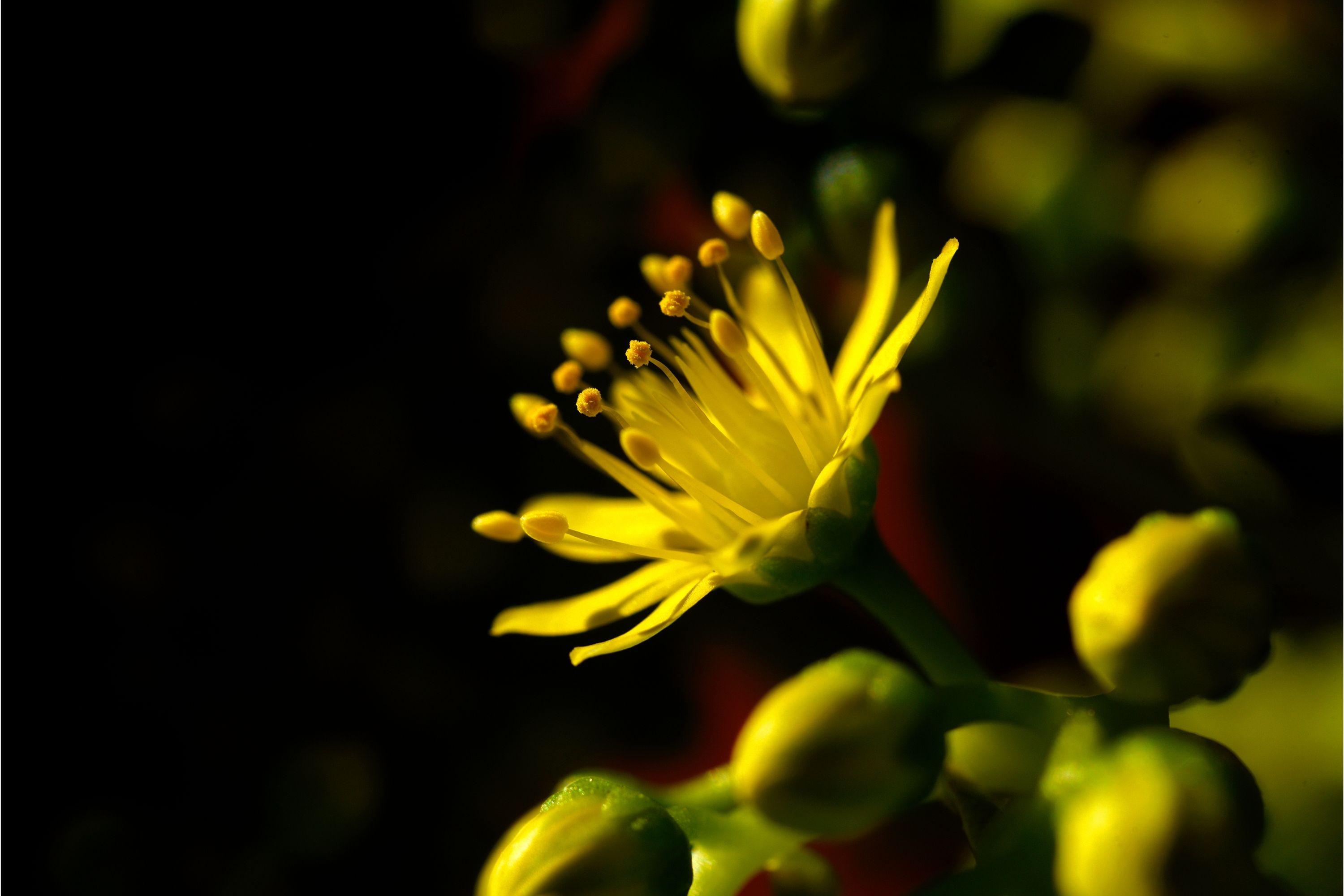Aeonium saundersii
(Aeonium saundersii)

Description
Aeonium saundersii is a species of plant in the genus Aeonium in the Crassulaceae family. The specific epithet honors the English botanist and entomologist William Wilson Saunders. Aeonium saundersii grows as a perennial, densely branched, clearly and pleasantly scented small shrub and reaches heights of growth of up to 30 centimeters. The more or less smooth, almost bare, slightly sticky shoots have a diameter of 1 to 4 millimeters. Their rather flat rosettes reach a diameter of 2.5 to 6 centimeters. Inner leaves are more or less upright and form a spherical bud in the dry season. The elliptical to obovate, green to yellow-green, felt-like leavesare 1.2 to 3.5 centimeters long, 0.7 to 1.3 centimeters wide and 0.15 to 0.25 centimeters thick. Towards the tip they are pointed or rounded or bluntly rounded. The base is wedge-shaped or narrowed. The underside of the leaf is reddish variegated. The loose inflorescence has a length of 3 to 8 centimeters and a width of 2 to 15 centimeters. The inflorescence stalk is 3 to 8 centimeters long. The 12- to 16-fold flowers are on a 3 to 12 mm long, slightly downy peduncle. Their sepals are slightly downy. The yellow, oblanceolate, pointed petals are 6 to 9 millimeters long and 1.5 to 2.5 millimeters wide. The stamens are bare. The chromosome number is 2n = 36. Aeonium saundersii is found on La Gomera at altitudes of 150 to 800 meters. The first description by Carl August Bolle was published in 1859. A nomenclatural synonym is Sempervivum saundersii (Bolle) Christ (1888). Aeonium, the tree houseleeks, is a genus of about 35 species of succulent, subtropical plants of the family Crassulaceae. Many species are popular in horticulture. The genus name comes from the ancient Greek "αιώνιος"/"aionios" (ageless). While most of them are native to the Canary Islands, some are found in Madeira, Cape Verde, Morocco, in East Africa (Ethiopia, Somalia, Uganda, Tanzania and Kenya) and Yemen. The succulent leaves are typically arranged on a basal stem, in a dense, spreading rosette. A feature which distinguishes this genus from many of its relatives is the manner in which the flowers bear free petals, and are divided into 6 or 12 sections. Each rosette produces a central inflorescence only once, and then dies back (though it will usually branch or offset to produce ensuing rosettes). Low-growing Aeonium species are A. tabuliforme and A. smithii; large species include A. arboreum, A. valverdense and A. holochrysum.
Taxonomic tree:







